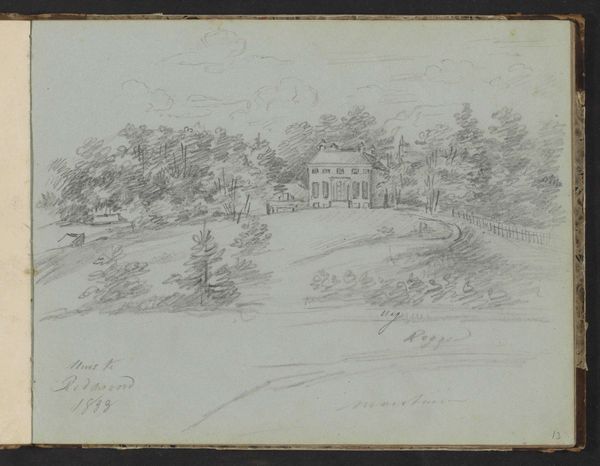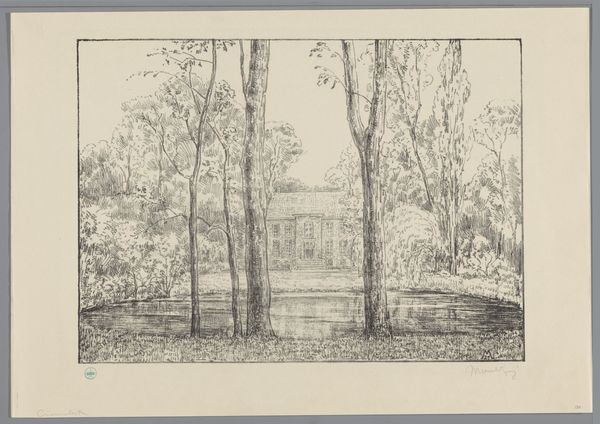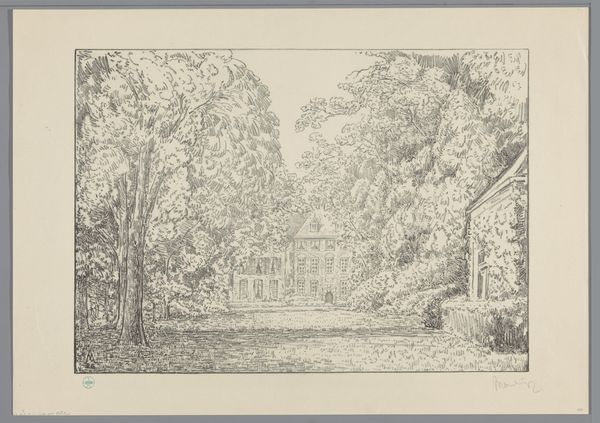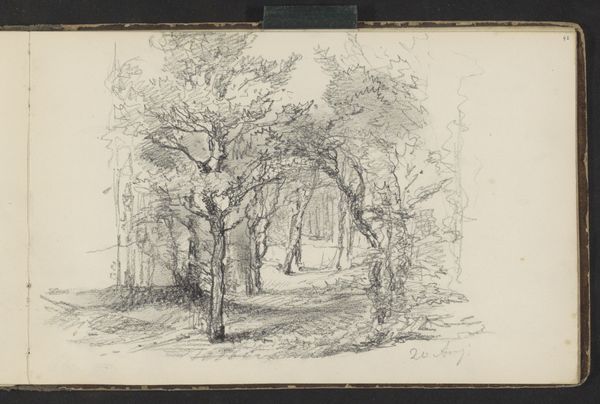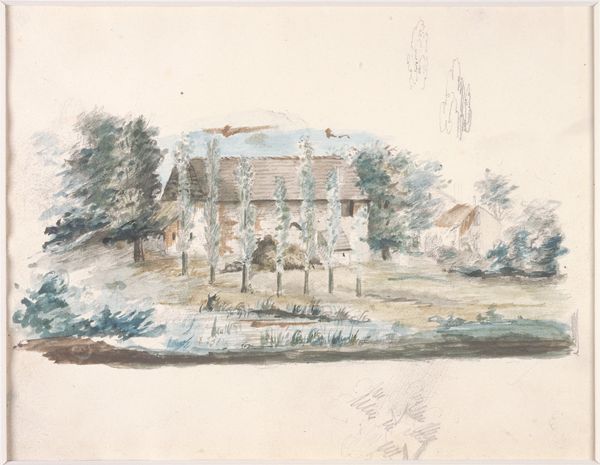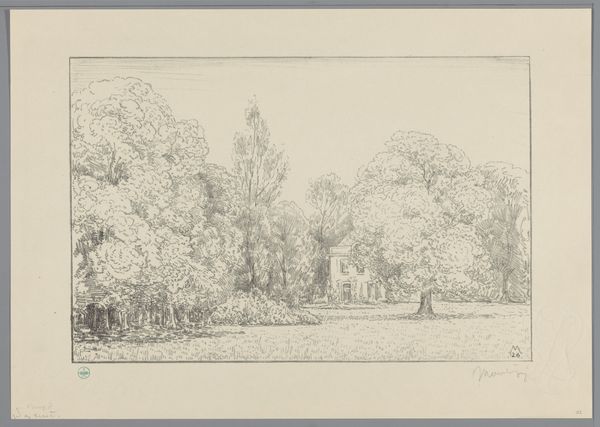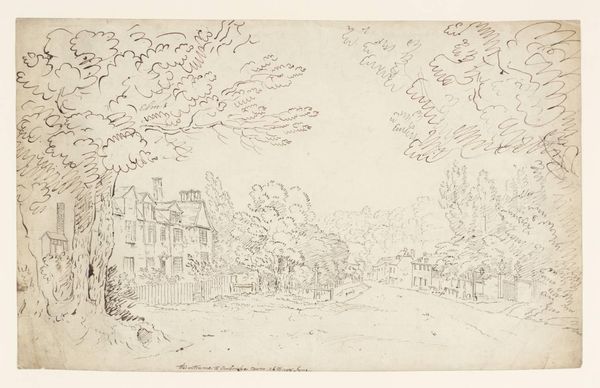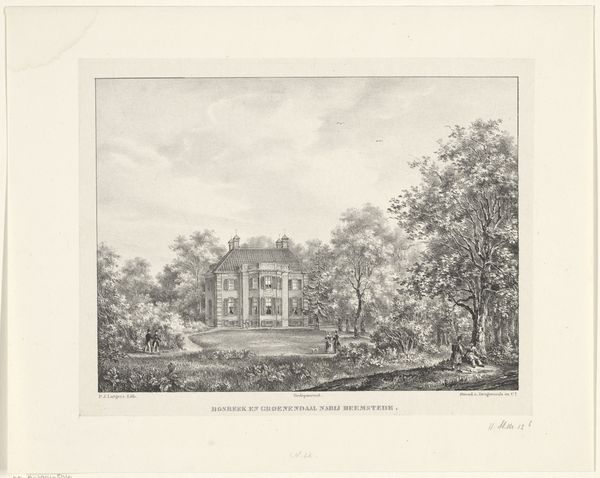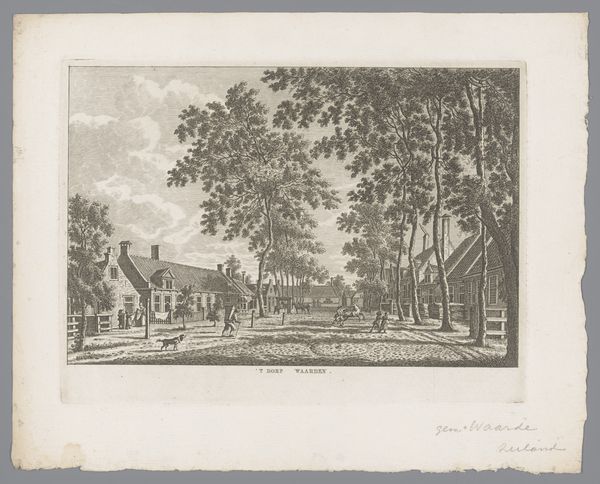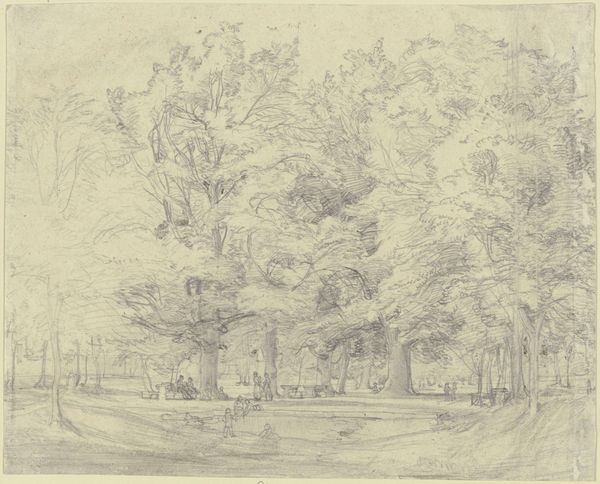
drawing, graphite
#
drawing
#
landscape
#
romanticism
#
graphite
Copyright: Rijks Museum: Open Domain
Editor: Here we have Johannes Tavenraat's "Landgoed Angerenstein te Arnhem," created in 1833. It's a graphite drawing. There’s a stillness to it that I find interesting; almost like a stage set for a story. What do you see in this piece, Professor? Curator: I am intrigued by the artist's choice of graphite. Consider its production in the 19th century. Graphite mining, processing – it represents a shift in industrial activity, doesn’t it? The relative ease and affordability of graphite compared to traditional drawing media like silverpoint meant a democratization of art making to some extent. How does the use of graphite here inform your understanding of romanticism? Editor: That's an interesting point. I always associate romanticism with these grand, sweeping gestures, not necessarily with everyday materials. It also makes me consider this piece in terms of labor; maybe Tavenraat employed assistants? Curator: Perhaps. More importantly, observe the application itself. Notice the layered strokes, building up tone and texture. The very act of drawing, the repetitive, almost meditative process – doesn't that reflect a kind of labor as well? Tavenraat's almost scientific approach, carefully cataloging the landscape – isn’t this a direct correlation to materialist notions? Editor: I hadn't really thought about the repetitiveness as labor, but now that you mention it, I see how much dedication must have gone into this! I am also beginning to see this drawing as not just representing the estate, but the means of artistic production available at that time. Curator: Exactly! By interrogating the materials and processes behind artmaking, we reveal the underlying socio-economic structures. Editor: This has definitely made me think about art in a whole new way, thanks! Curator: My pleasure, seeing through the lens of material conditions provides fresh insight.
Comments
No comments
Be the first to comment and join the conversation on the ultimate creative platform.

